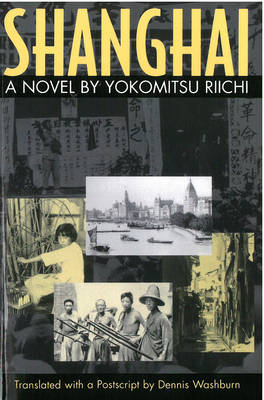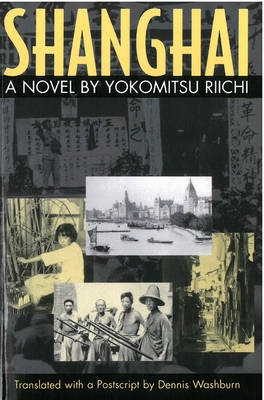
- Afhalen na 1 uur in een winkel met voorraad
- Gratis thuislevering in België vanaf € 30
- Ruim aanbod met 7 miljoen producten
- Afhalen na 1 uur in een winkel met voorraad
- Gratis thuislevering in België vanaf € 30
- Ruim aanbod met 7 miljoen producten
Zoeken
Omschrijving
Published serially between 1928 and 1931, Shanghai tells the story of a group of Japanese expatriates living in the International Settlement at the time of the May 30th Incident of 1925. The personal lives and desires of the main characters play out against a historical backdrop of labor unrest, factional intrigue, colonialist ambitions, and racial politics.The author, Yokomitsu Riichi (1898-1947), was an essayist, writer, and critical theorist who became one of the most powerful and influential literary figures in Japan during the 1920s and 1930s. In 1924 Yokomitsu joined with Kataoka Teppei and Kawabata Yasunari to found the Shinkankaku-ha (New Sensation School), artists who looked to contemporary avant-garde movements in Europe--Dadaism, futurism, surrealism, expressionism--for inspiration in their effort to explode the conventions of literary language and to break free of what they saw as the prisonhouse of modern culture. A key feature of the school's experiments was the use of jarring imagery that originated in the visual effects of cinema.Yokomitsu incorporated the striking visuality of his early experimental style into a realistic mode that presents a disturbing picture of a city in turmoil. The result is a brilliant evocation of Shanghai as a gritty ideological battleground where dreams of sexual and economic domination are nurtured.
Specificaties
Betrokkenen
- Auteur(s):
- Vertaler(s):
- Uitgeverij:
Inhoud
- Aantal bladzijden:
- 248
- Taal:
- Engels
- Reeks:
- Reeksnummer:
- nr. 33
Eigenschappen
- Productcode (EAN):
- 9781929280018
- Verschijningsdatum:
- 18/06/2001
- Uitvoering:
- Paperback
- Formaat:
- Trade paperback (VS)
- Afmetingen:
- 153 mm x 230 mm
- Gewicht:
- 344 g

Alleen bij Standaard Boekhandel
+ 74 punten op je klantenkaart van Standaard Boekhandel
Beoordelingen
We publiceren alleen reviews die voldoen aan de voorwaarden voor reviews. Bekijk onze voorwaarden voor reviews.








